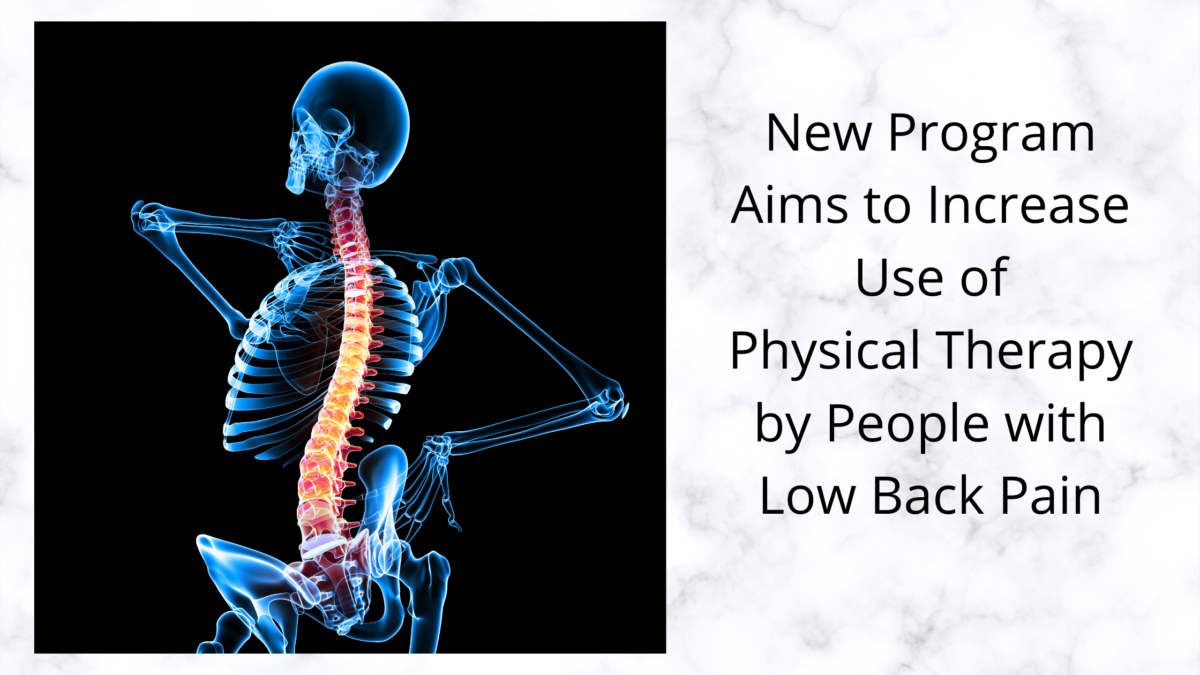Back pain is a huge problem in developed nations worldwide. It has or will affect most of us at some point in our lives. The current estimate is that 80% of people will experience back pain at least once. Back pain is also expensive. Treatment for back and neck pain makes up the biggest healthcare expense in the US, totaling $134 billion spent in 2016. This surprises a lot of people. Why is it so expensive?
The first reason is that it’s so common. The second reason is that our current system isn’t very good at treating it. Current recommendations for the “best practice” treatment of back and neck pain include starting with active treatments like physical therapy, as well as with activity modification, such as learning to maintain improved posture during lifting or sitting or other daily activities. Research has shown that early assessment and treatment performed by a physical therapist leads to better outcomes and lower costs of care for back and neck pain. Unfortunately, only 2% of people with back pain start care with a PT, and only 7% get to see a PT within 90 days of the onset of their pain. At the same time, a study looking at about 2.5 million people with back pain published in the Journal of the American Medical Association (JAMA) showed that often expensive and sometimes unnecessary imaging is often the first thing that patients are told to do, with 32.3% of these patients received imaging such as X-rays or an MRI within 30 days of diagnosis and 35.3% received imaging without previously undergoing a trial of physical therapy. Both of these practices are counter to current practice guidelines across the medical community for low back pain treatment. It is well-established that there is no need for imaging in most cases of back and neck pain – particularly when there has not been any kind of traumatic event prior to the symptoms. If there has been a high speed car wreck or a significant fall and the possibility of a spinal fracture exists, then imaging is an appropriate first course of care. However, in instances where no trauma has been sustained, the accepted practice is to hold off on ordering imaging unless there are particular clinical observations made after an extended period of consistent rehabilitative care that would lead medical providers to believe that imaging might provide additional useful diagnostic information.
To encourage early treatment of back and neck pain with a physical therapist’s supervision, a new pilot program is being rolled out by TRICARE, the insurance system used throughout the US military. This program is waiving the co-payments owed by patients for up to three PT sessions, in an attempt to improve the use of what the Defense Health Agency calls “high value” treatment for low back pain. The theory is that once a person sees some benefit from PT treatment of their pain, they are likely to continue with this type of care. TRICARE’s data seems to indicate that this strategy will work. In a press release, TRICARE states that once people attend one session of physical therapy, they’re likely to go back for more, no matter what their co-payment may be. TRICARE also found that higher co-payments could be a barrier to people trying that first visit, or a reason that they would delay the start of care. For the group of patients with the highest co-payments in the system, only 38% of the people for whom physical therapy was indicated and recommended actually attended the first visit. That’s about half the rate of attendance found for patients in the lowest co-payment group.
The fact that such a major insurance provider is looking into the value of early guidance from physical therapists for the treatment of back and neck pain is great news for everyone. If TRICARE can show that lowering the cost of therapy for patients can improve outcomes and save insurance companies money, other major insurers will likely follow with similar practices. This could improve the lives of millions of people every year, while also reducing the huge cost of treating low back pain for the country. That seems like a win for everyone involved.
If you are struggling with back and/or neck pain and have NOT sought out assessment by a physical therapist, it would be a good idea to take this step towards improving your health. In Texas, it is now possible for most people to see a physical therapist without a prescription or a referral from another medical provider. (Some specific insurance plans do have specific requirements. For further information about your specific plan, refer to your plan documents, or ask your physical therapy clinic to help you to find additional information.) Early treatment has been shown to yield the most optimal treatment outcomes for back and neck pain. However, it is also never too late to make strides towards improving even the most chronic pain issues. If you have questions about whether a physical therapist can help you with your back or neck pain issues, give Symmetry a call. We’d be happy to help you to improve your quality of life!

